Heckler & Koch Eyes Adapting Its Rifles To Fire Soviet-Designed Ammo
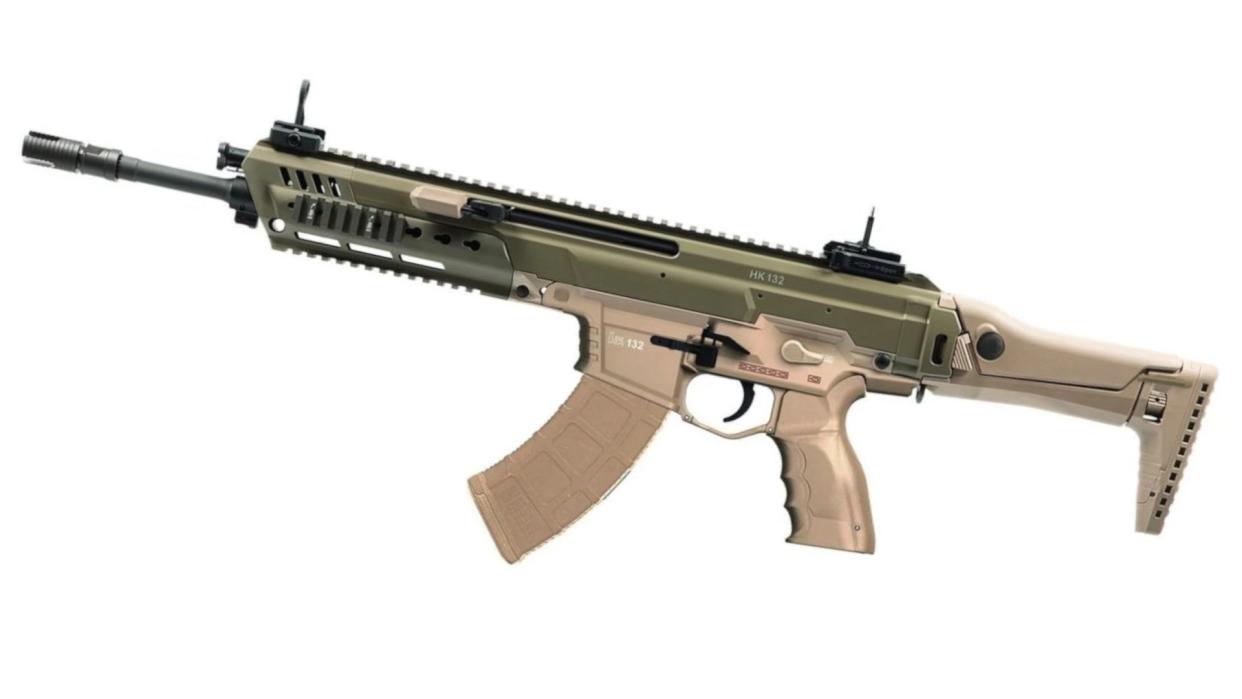
Germany's Heckler & Koch is looking into producing new versions of firearms across its catalog in Soviet-designed calibers, such as the 7.62x39mm round made famous by the AK-47 rifle. A major driving factor has been the ongoing war in Ukraine, where that country's armed forces continue to make heavy use of Cold War-era firearms and derivatives thereof. At the same time, guns that fire Soviet ammunition types remain in widespread use around the world and the famed German gunmaker has had an on-again-off-again interest in trying to tap into those markets for decades.
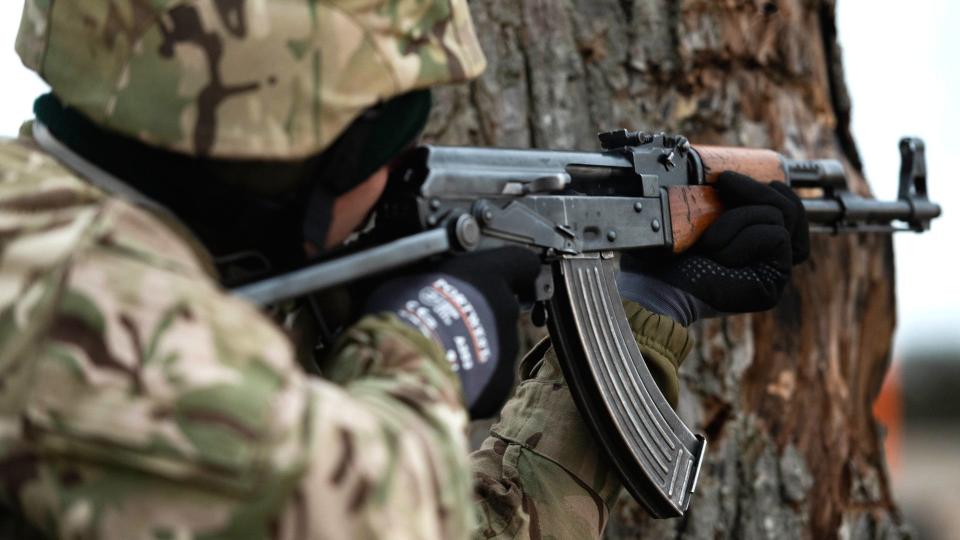
German news outlet Welt published a story yesterday touching on Heckler & Koch's (H&K) future product plans as part of a broader push by the company to increase sales.
"H&K is planning to expand its product range to include assault rifles and machine guns for Kalashnikov ammunition and other calibers from the former Warsaw Pact," according to a machine translation of the German-language piece from Welt. "'There are corresponding needs, so conceptual studies have already begun,' said the [H&K] spokesman. There are development projects, but no production yet."
Welt did not name the cartridges that H&K is now considering rechambering some of its existing guns to fire. The most prolific types developed in the Soviet Union during the Cold War for rifles and machine guns were the 7.62x39mm and 5.56x39mm rounds.
Welt did note that last December H&K had unveiled the HK132E, a 7.62x39mm version of its HK433 assault rifle, the baseline version of which is chambered to fire the NATO-standard 5.56x45mm round. From what has been seen of it to date, the HK132E looks largely unchanged from its parent gun except in barrel caliber, magazine well, and magazine. The 7.62x39mm cartridge has a tapered case that requires magazines with more pronounced curvatures to feed reliably compared to ones for 5.56x45mm ammunition.
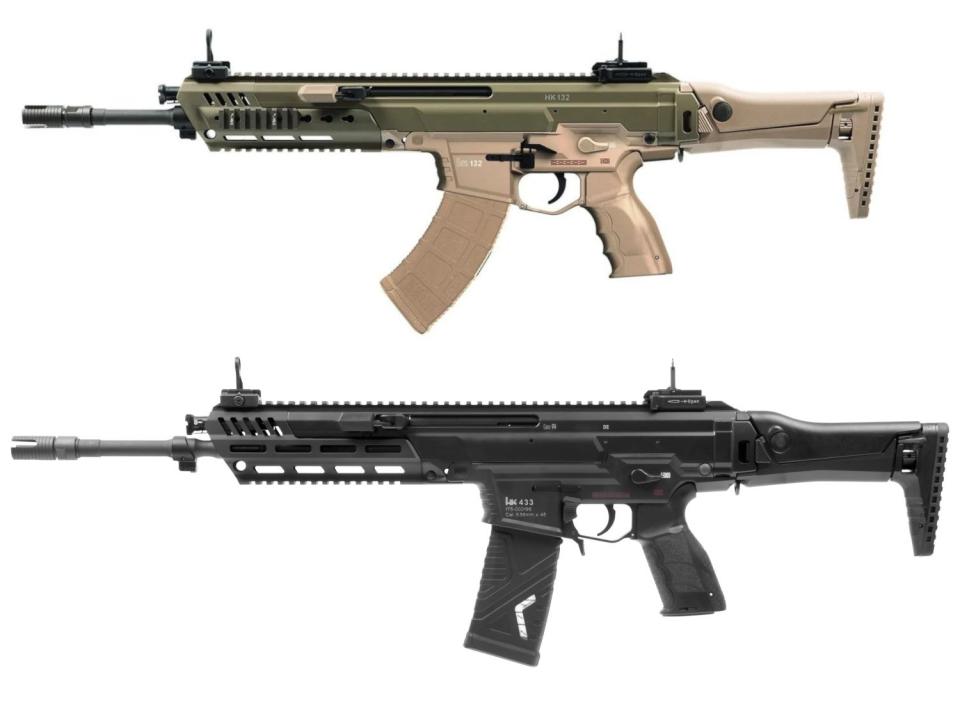
The HK433 was designed from the start as a highly modular platform with readily interchangeable barrels and other components, as you can read more about here. H&K has already offered other caliber options for the HK433 series. The German armed forces are notably in line to become the first military user of a gun from this family with the reportedly impending adoption of the compact HK437 version chambered in the U.S.-designed .300 Blackout cartridge.
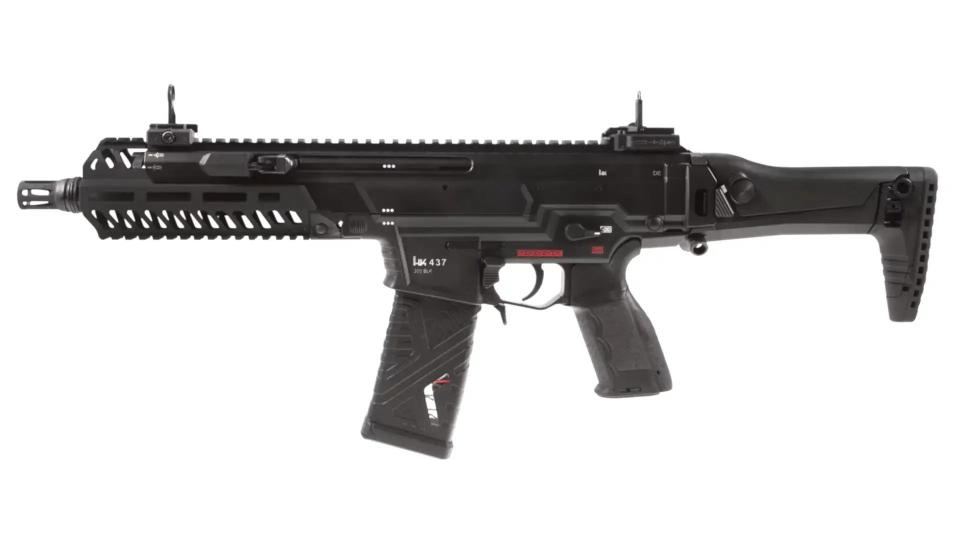
Other H&K guns could also potentially be rechambered or otherwise adapted to fire 7.62x39mm, as well. This could include versions of the company's popular 5.56x45mm HK416 or 7.62x51mm HK417 rifle patterns, as well as its MG4 and MG5 belt-fed machine guns chambered in those same calibers. As an aside, in 2022, the German military picked a version of the HK416, which has been growing in popularity internationally, including in the U.S. armed forces, to become its next standard service.
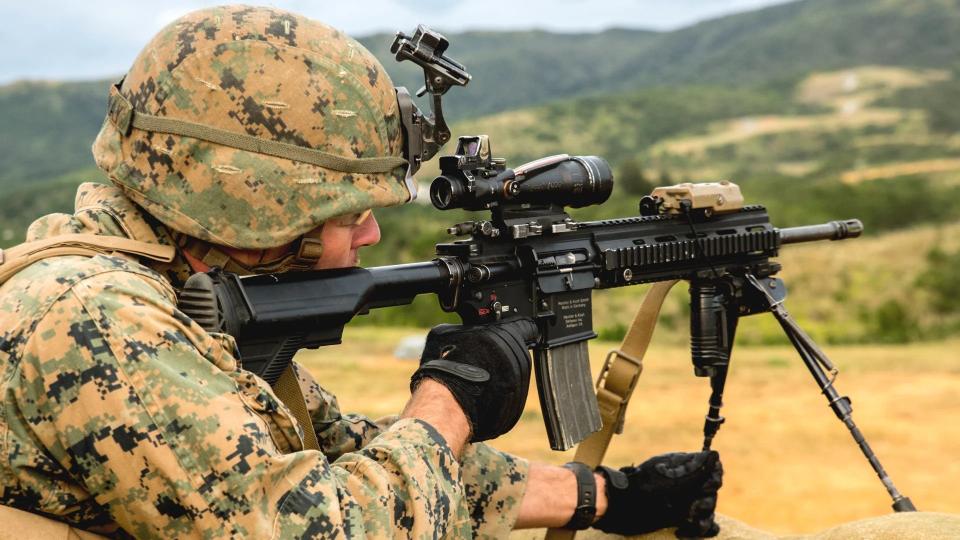
https://www.youtube.com/watch?v=JIgEVfpJ_uA
All of this applies equally to the potential for future H&K guns in 5.45x39mm, which was originally developed for the AK-74. The AK-74 was intended as a successor to the 7.62x39mm AK-47 family, but variants and derivatives of both types remain in widespread service around the world, including in Russia and Ukraine.
https://www.youtube.com/watch?v=xCgmfbAbP-Q
The still very popular 7.62x54mmR cartridge, which well predates the Soviet Union and the Cold War, may be harder for H&K to convert its guns to fire. This round was developed at the end of the 19th century and features a large rim at the rear. This is typical of metallic-cased ammunition of that era, something that was still a very new concept at the time, which was being produced primarily for use in various bolt-action and other manually-operated rifles, as well as very early machine guns.
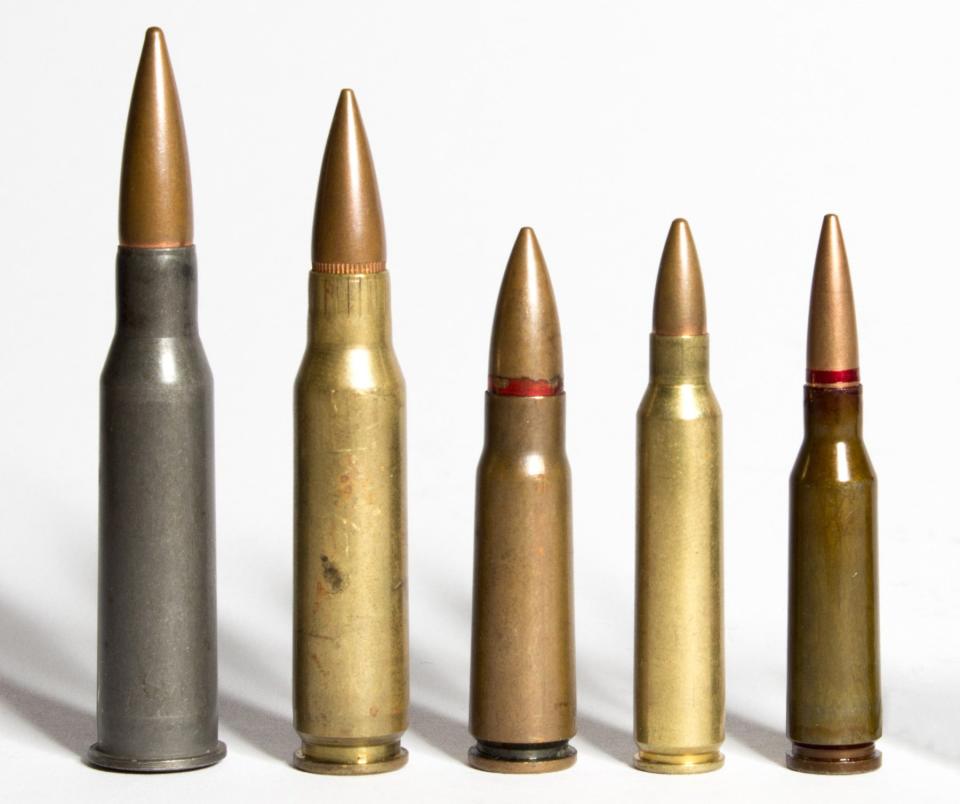
How difficult it might be for H&K to convert guns designed to fire rimless cartridges, even somewhat similarly sized ones like the 7.62x51mm NATO, to work with the rimmed 7.62x54mmR is unclear. Russia's military, along with Ukraine and many other armed forces, continues to use more modern machine guns and marksman rifles designed from the outset to fire the 7.62x54mmR round.
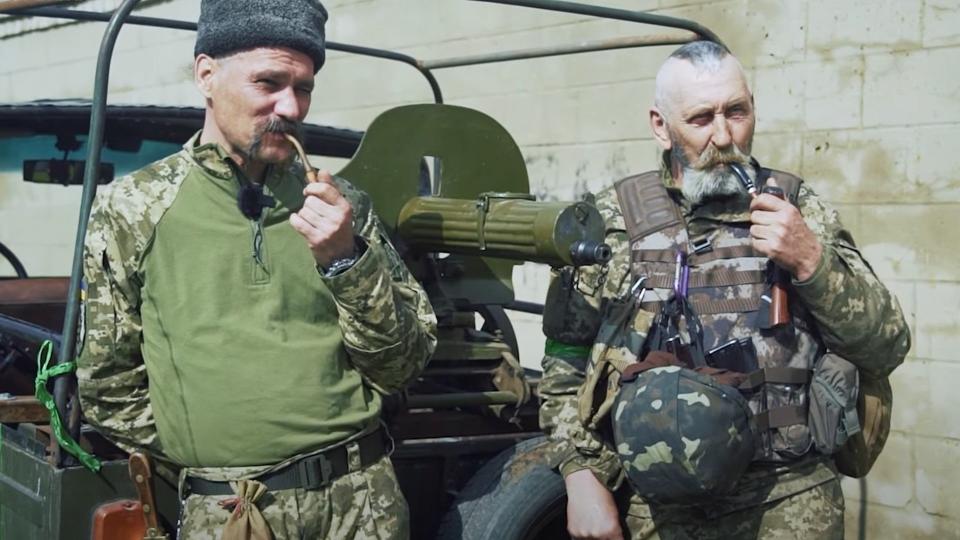
Regardless, when it comes to H&K's new interest in more guns in Soviet-design calibers, a "spokesman referred to the operational experience of Ukrainian special forces," Welt's report added. "They showed the importance of calibers from the former Warsaw Pact."
Ukraine is certainly a major market currently for small arms in Soviet-designed calibers. H&K could also seek to leverage an active production line for such weapons in Germany to get contracts from authorities in Berlin, or facilitated by them, on behalf of their counterparts in Kyiv. In a tangentially relevant development, just last week, the U.S. State Department approved a potential sale of M142 High Mobility Artillery Rocket Systems (HIMARS) to Ukraine and said the prospective deal would be financed by the German government.
At the same time, Marc Roth, H&K's Vice President of Product Strategy, told Europäische Sicherheit und Technik, a German trade publication, back in December that the company's products in NATO-standard calibers are now well represented in Ukraine thanks in large part to Western aid. Roth is also in charge of a company task force focused on Ukraine.
https://www.youtube.com/watch?v=U0pi6HvKJhk https://www.youtube.com/watch?v=qN3hC2585tc
H&K has been openly discussing the potential for variants or derivatives of the HK433 chambered in 7.62x39mm, as well as for the larger NATO-standard 7.62x51mm round, since at least 2019. The German gunmaker also has a long history of pitching guns in that caliber dating back all the way to the late 1950s.
Even during the Cold War, there was the potential for contracts to supply the militaries and other security forces of ostensibly non-aligned countries with new small arms. Offering guns in Soviet-designed calibers those nations might already have in their inventories was one potential path into those markets. During the 1950s and 1960s, at least, H&K included full-size rifles and compact carbines chambered in 7.62x39mm, the HK 32 and 32K, alongside guns in NATO calibers in its catalog. The company may have pitched versions of the magazine and belt-fed automatic rifles/light machine guns it sold at the time in the Soviet caliber, as well.
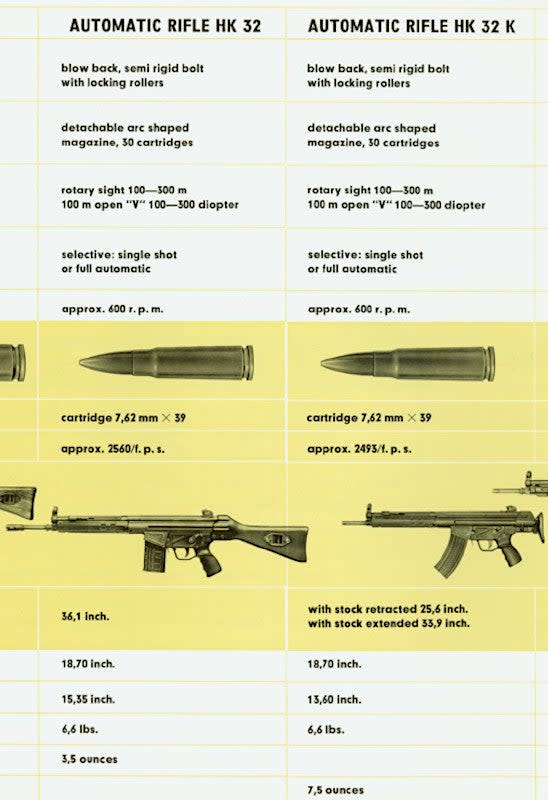
"I'm aware of a contract that was made to someone in Africa, possibly Tanzania, but I'm not 100% sure on that," firearms expert Ian McCollum, who runs the Forgotten Weapons website, said in a video on the HK 32, seen below, back in 2019. "There was a developmental batch [of HK 32s] made that did use AK magazines specifically for competing for a Finnish rifle contract, which it didn't get."
https://www.youtube.com/watch?v=sJSuSQrDd7k
More recently, pictures have emerged that look to show members of Mexico's security services with HK 32-like guns, but it is unclear whether or not those are local conversions. Commercial gunmakers have crafted HK 32-esque 'clone' designs primarily aimed at civilian shooters, as well.
In addition, there has been more general interest over the years among Western armed forces and intelligence services in acquiring guns in Soviet calibers for special operations missions and covert and clandestine activities. The ability to make use of captured or otherwise locally sourced ammunition has been and continues to be attractive to special operations forces in the United States and elsewhere. For instance, multiple variants and derivatives of the AR-15/M16 pattern chambered in the 7.62x39mm cartridge have been developed over the years, in part because of interest from the U.S. special operations community.
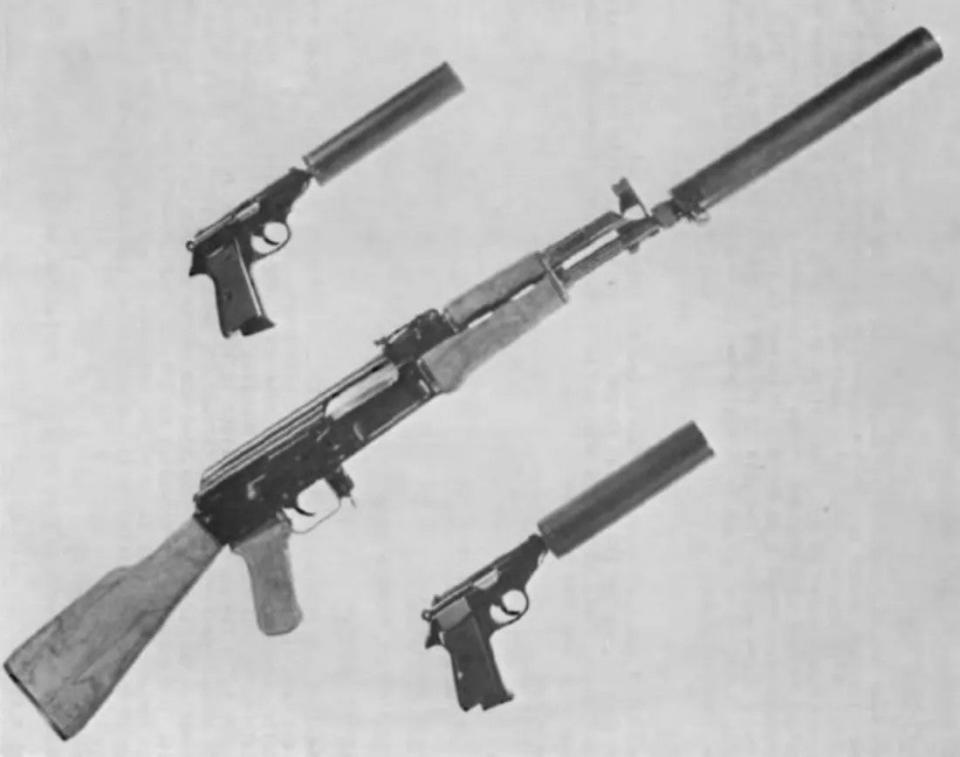
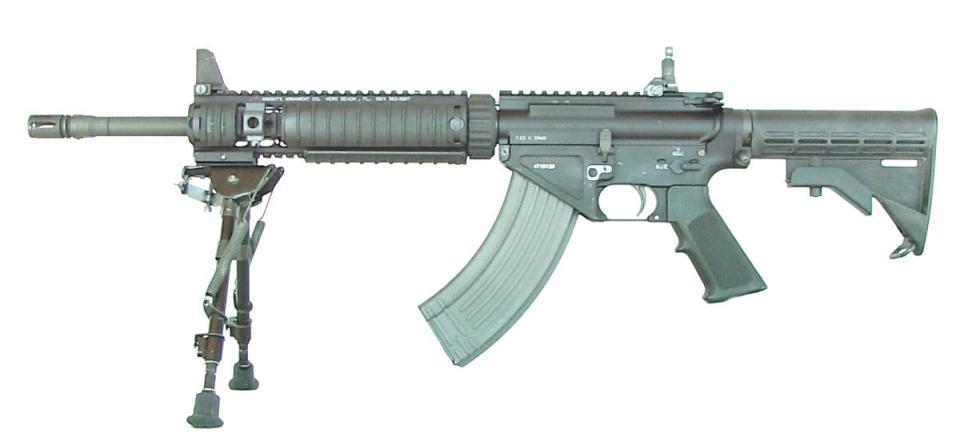
Manufacturers beyond H&K have also seen the potential to get into new non-Western markets with AR-15/M16 types and other firearms chambered to fire Soviet-designed rounds, as well. The Ukrainanian armed forces acquired some number of AR-15/M16-based guns in 7.62x39mm, called WAC-47s, seen in the video below, from a company in the United States in 2018.
https://www.youtube.com/watch?v=4Ua_nrWy0a8
The United States also has a long history of simply supplying Soviet-style small arms and ammunition to go with them to allies and partners, now including Ukraine. Since the end of the Cold War, the U.S. government has established a supplier base to support these efforts, particularly in Central and Eastern Europe. Even before its all-out invasion of Ukraine in 2022 and a now public push by American authorities to wean countries off of Russian weapon systems and other materiel, the Kremlin has complained about the United States and others encroaching on its global small arms market share.
Guns chambered in Soviet-designed cartridges have been and still are popular among civilian shooters, including in the United States, in part because of their historically low prices per round compared to similar Western types. However, as older surplus stocks have steadily dried up, and with various sanctions now in place on Russia, the cost of such ammunition on the commercial market has increased.
Altogether, while the war in Ukraine may be a major factor in H&K's new push to develop a line of guns chambered to fire Soviet-designed ammunition, this is something that could open doors to other lucrative military and civilian markets around the globe.
Contact the author: joe@twz.com

